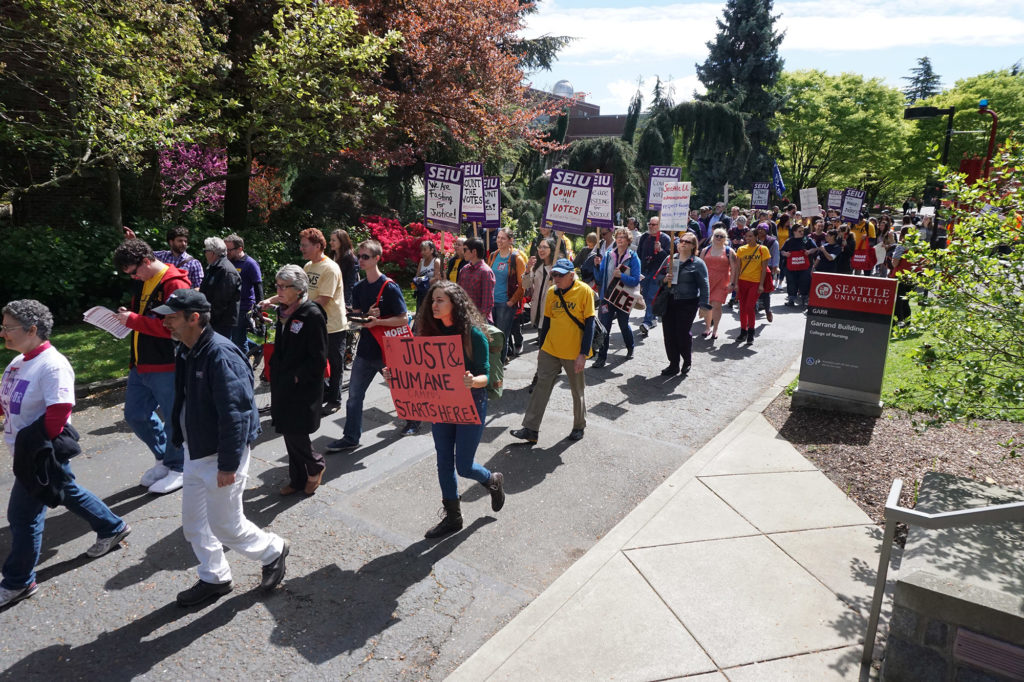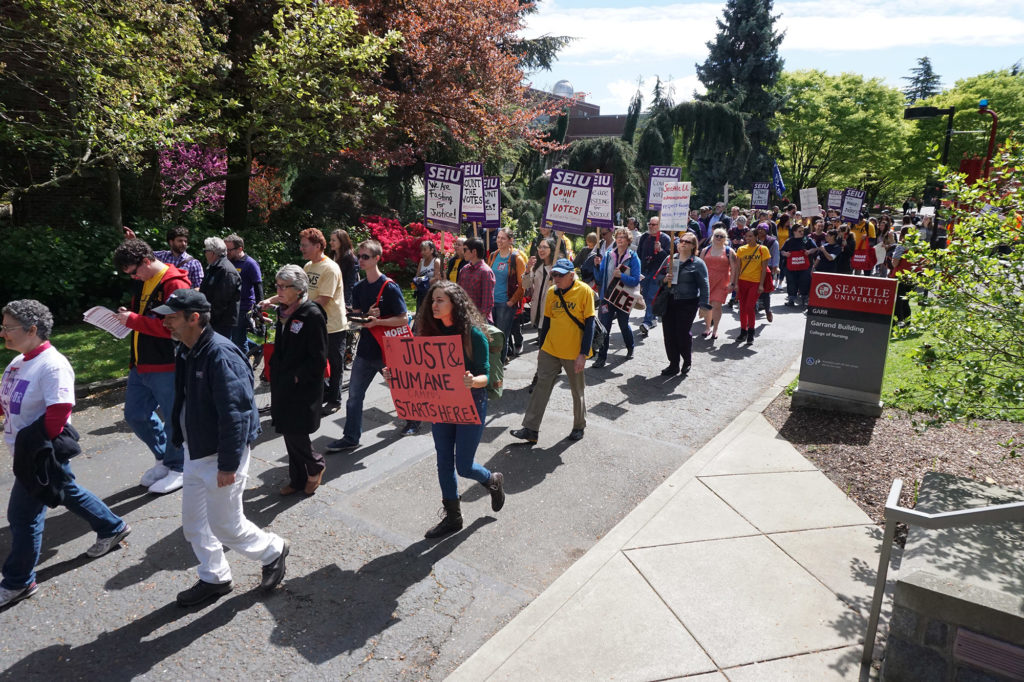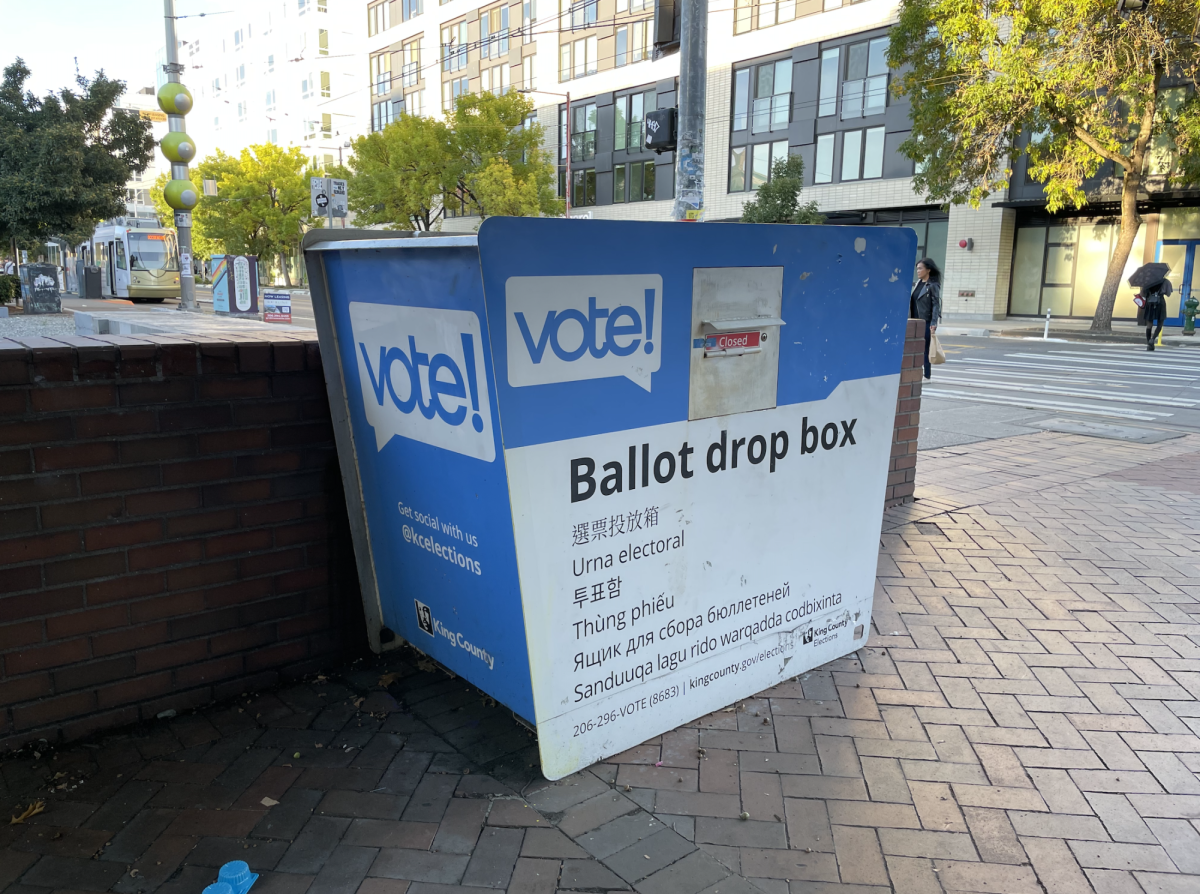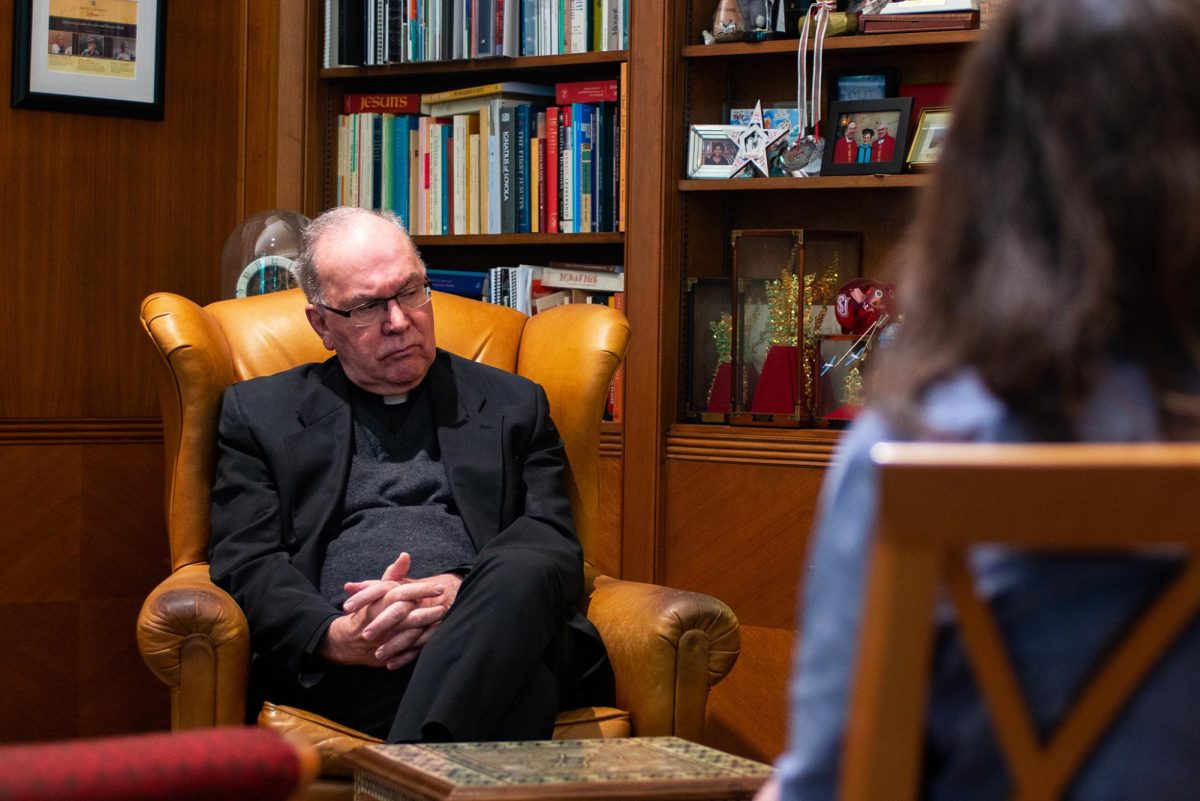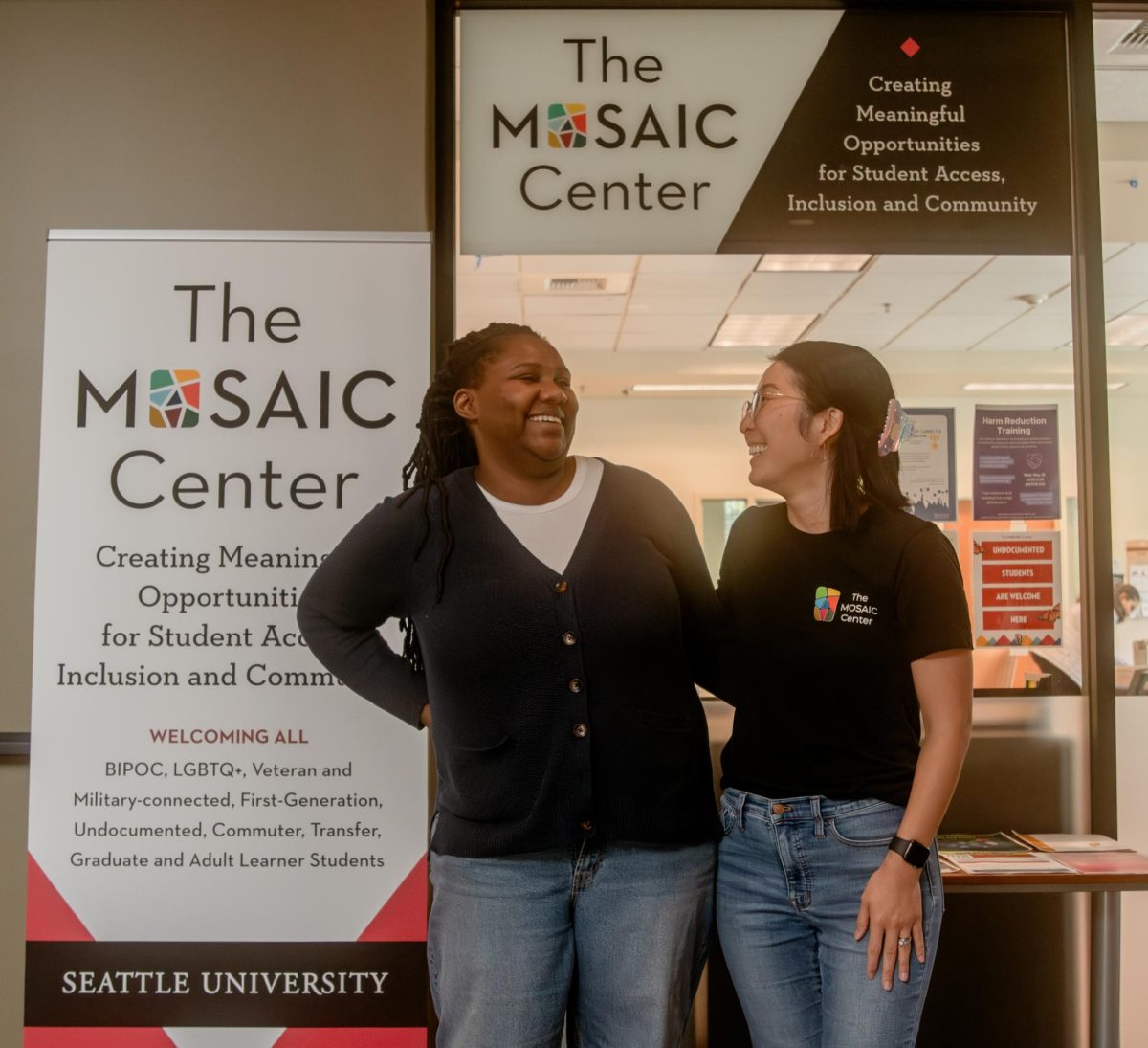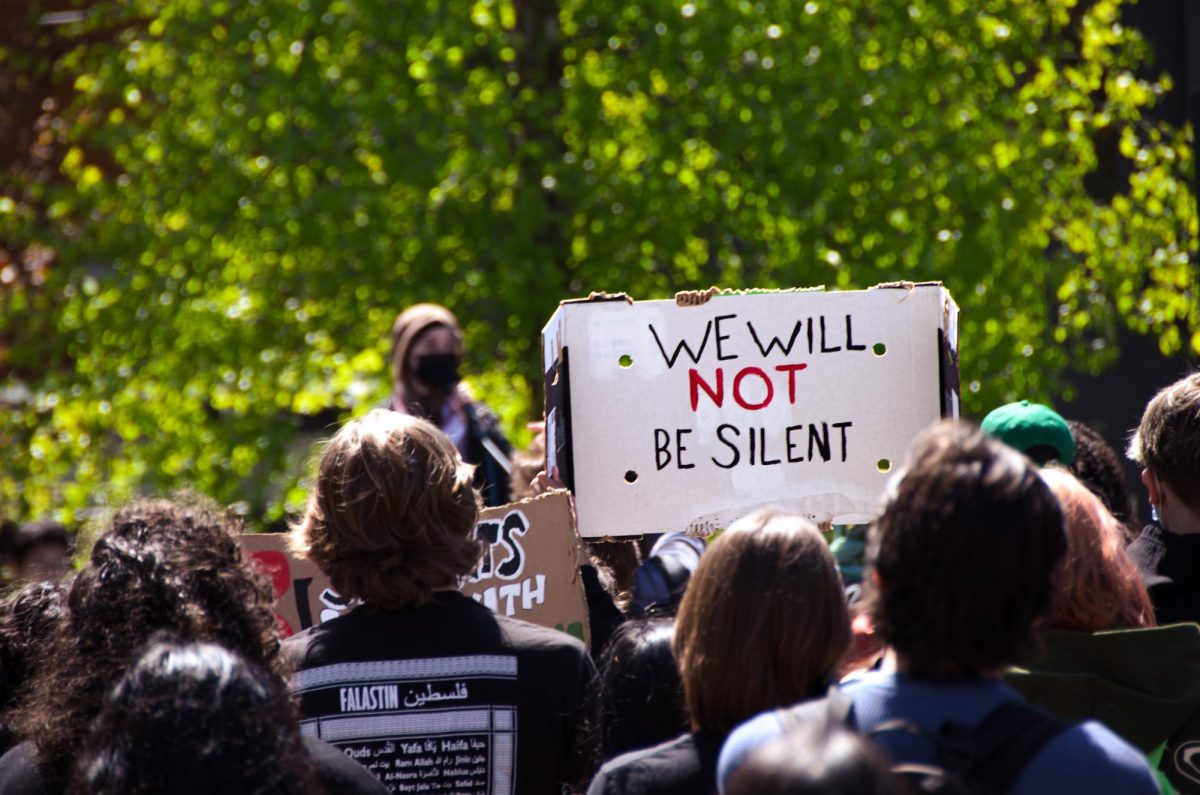After waiting for two years, Seattle University adjunct faculty were officially granted the right to unionize on Sept. 12. The National Labor Relations Board approved a long- standing petition to allow adjunct faculty to join the Service Employees International Union, making Seattle U one of just a few private Jesuit universities in the country to permit this change.
Students and faculty alike who were present to experience the swells of passion around the movement, including an organized walk-out protest in Feb. 2015, rejoice in this news in the hopes that it will mean positive changes both inside the classroom and within the Seattle U community.
“I think it is a very good change. I think that adjunct professors should feel secure in their positions,” said Wendall Tseng, a student and member of the Reignite the Mission club on campus. “And without giving adjunct equal benefits, I feel there is less incentive as a professor to build a community of the best curriculum. I do not see a valid instance in which this [unionization] shouldn’t be allowed.”
The union has yet to begin its collective bargaining process, which includes negotiations between faculty and administrators. A unit will be formed by elected adjunct members who will work to alleviate issues within the non-tenure experience regarding wages, hours, work conditions and benefits. From there, they will work with Seattle U administrators to decide on regulations and legislation to protect these workers.
All adjunct faculty will be subject to these future changes, with the exception of faculty working within departments of religion and theology, who are not permitted to unionize due to a rule regarding the separation of church and state.
The road to unionization was not without its bumps, and resistance from some faculty and administrators halted the vote for over two years.
The university argued that because it has increased minimum full-time faculty salaries over the past several years—from $24,600 to $45,000—a union would not be necessary in addressing faculty concerns.
In 2014, University President Fr. Stephen Sundborg, S.J. released a video addressed to adjunct faculty strongly encouraging them to vote against the right to unionize. The video has since been removed from the university’s website.
In the video, Sundborg implied that the right to unionize would go against the university’s mission statement, and stated it would be “nearly impossible” to work with faculty if they had to go through the Service Employees International. Some faculty felt differently about this point, including Emily Lieb, an assistant professor within the Matteo Ricci College.
“Nothing is more consistent with the Jesuit mission of this university than having an organized faculty that is treated fairly and ethically and committed to their jobs,” Lieb said.
Sundborg went on to describe how happy students seem to be with their adjunct professors, and that student satisfaction should warrant not granting adjunct members the right to unionize. But as former Seattle U adjunct professor Larry Cushnie pointed out, there are several of aspects of teaching that go unseen to the average college student. Cushnie left Seattle U in 2015, and currently teaches at the University of Washington and Bellevue College.
“I talked to other instructors, who even while they were teaching, were eligible for things like food stamps and public assistance,” Cushnie said.
The university’s argument against unionization also referenced Catholic Social Teaching, a doctrine created by the Catholic Church that dictates the church’s feelings and thoughts on the role of church and state, social organization and other forms of social justice. While some cited these teachings to support the campaign against unionization, Catholic social teaching explicitly allows and promotes the right to organize.
But ultimately, the commitment of several faculty members and students to ignite a common governance for all hired adjuncts was able to win out over the university’s defense.
The union will specifically allow adjunct faculty to have a greater voice and role in the university’s politics. For instance, they hope to have a larger say in how departments are run. Cushnie explained that when important, school-wide decisions on education are allocated to those who do not have the expertise to make those decisions, it can create dissonance between departments and how they function.
“Decisions were being made to do things like cancel or nix some of the departments on campus…and then also adding new programs even as the university was experiencing budget problems, in terms of all- around education, and no one had a say about it—adjuncts especially,” Cushnie said.
Proponents of unionization have agreed that one of the most important reasons for unionization is the impact it can have on job security.
“Being tenured, you have a lot of academic freedom as far as your curriculum because there is no fear of being chopped off the faculty line,” Tseng said. “And in that way, job stability really helps you create the best kind of classroom because you can really have the most freedom to teach what you really want to teach, and really give students the best environment.”
A lack of job security in the past has greatly impacted the well-being of some Seattle U adjunct professors. Audrey Hudgins, a clinical instructor for the Matteo Ricci College, recounted having a class cancelled a week before it was meant to start.
“You do a bunch of work you don’t get compensated for, and then you don’t get a check when your rent is due,” Hudgins said.
Lieb also emphasized the negative impacts this kind of last-minute planning can have.
“The issue has been historically that people who are just teaching one class or two classes, there is no notice if they are going to cancel your class so you can show up the day before school starts and find you are not teaching,” Lieb said.
Creating equality of treatment where equality already exists is also a huge point of this movement.
“In my view, there is no difference,” Hudgins said. “There is the same level of academic training, the same credentials, the same disciplinary expertise, the same commitment to student success.”
With this new union, situations in which adjunct faculty have been given less rights and benefits as their tenured counterparts will hopefully be avoided to maintain the livelihood of all faculty, as well as that of the students they teach.
“Nothing is more consistent with the Jesuit mission of this university than having an organized faculty that is treated fairly and ethically and committed to their jobs.”
– Professor Emily Lieb
Perhaps the demographic this change will affect the most are the students. Students are what make Seattle University the prestigious Jesuit college it is today. This of course could not have been achieved without the instruction and guidance of Seattle University professors. Cushnie illustrated the urgency of this system of checks and balances at Seattle U.
“Universities in the last couple decades started organizing themselves in much more of a corporate-based structure. And you see this at SU; the hiring administration has skyrocketed and tenure track faculty have declined,” Cushnie said. “If a tenure leaves for one reason or another…they tend to hire two to three adjuncts to make up for that since it is so much cheaper.”
At its core, the lack of unionization was taking its toll on the classroom experience.
“At Seattle University my students were going into mass amounts of debt, and had no chance to form relationships with the adjuncts that were teaching the majority of their classes because they [the adjunct] had no idea if they would even be there the next quarter,” Cushnie said.
With the support of clubs campus-wide and a passion for justice brought forth by both students and faculty, some practices within university administration can now be halted and renegotiated to better fit the adjuncts being impacted.
“If you want a healthy, Jesuit, social justice university, just look at the middle of campus, look at what types of protests and what students are involved in,” Cushnie said.
Students are the biggest supporters and drivers of social change on campus. Whether they’re tackling issues of divestment or organizing occupations to take a stand against racism within their curriculum, Seattle U students continue every day to trailblaze and improve themselves, their campus and their community. This drive can be attributed to all the professors who have guided and educated students to profound bravery to stand up to their own university.
Seattle U’s character can be defined by its mission statement, and for many, unionization is just one step closer to a more just and humane world.
The author may be reached at




